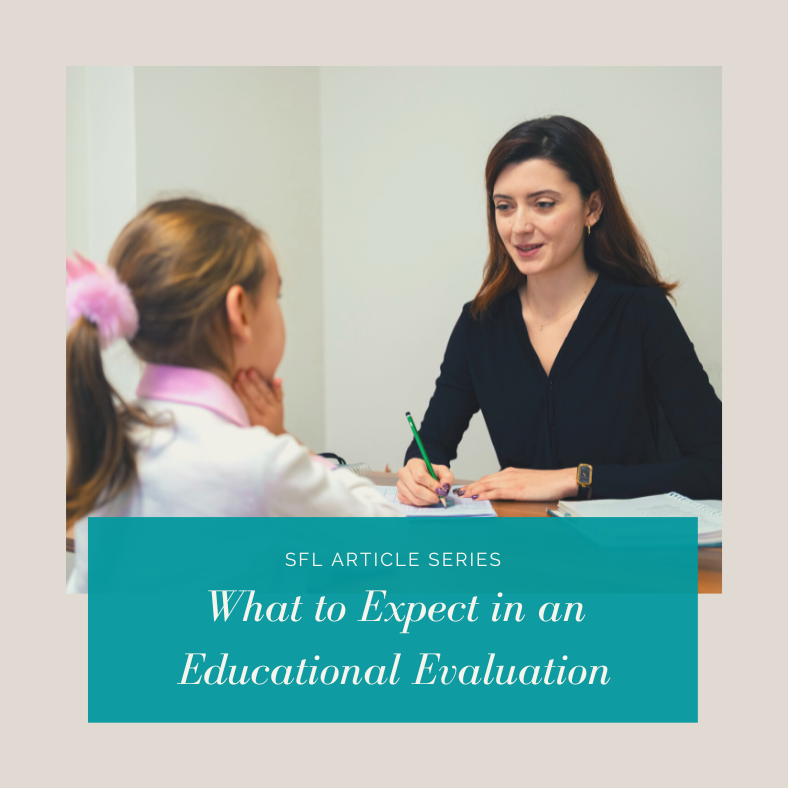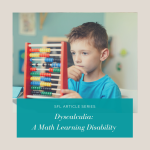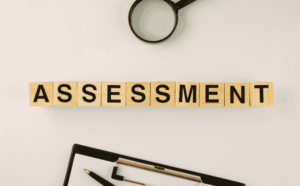No products in the cart.

To obtain an IEP, a child must complete a battery of tests, usually given by a school-based psychologist or as part of an independent educational evaluation. Assessments are integral to creating an IEP, as they provide an understanding of the student’s abilities and challenges, ensuring that the plan is tailored to unique needs and circumstances. However, it can be difficult for caregivers to understand the test scores. By familiarizing yourself with key terms and common assessments, you can enter the discussion prepared to understand the educational evaluation results.
What is a Norm-Referenced Assessment?
It determines how a person’s performance ranks compared to their peers. Scores are reported in terms of percentiles or standard scores. A percentile indicates the percentage of people in the norming group who scored lower than the individual. Standard scores often have a mean (average) of 100.
What is a Criterion-Referenced Assessment?
It determines whether an individual has achieved a specific level of proficiency in a particular skill or area. The focus is on measuring what a person knows or can do against predetermined criteria. Scores are typically reported as a simple pass/fail or on a scale indicating levels of mastery.
Norm-referenced and criterion-referenced assessments are different methods of evaluating and interpreting test scores
Now that we know the two ways assessments are evaluated and interpreted, let’s take a look at some common assessments included in an educational evaluation.
Woodcock-Johnson Tests of Achievement (WJ-IV)
The WJ-IV provides a comprehensive measure of an individual’s reading, math, and written language achievement. It is often used in the evaluation of learning disabilities. These tests provide insights into students’ academic strengths and weaknesses, helping to set goals.
Wechsler Intelligence Scale for Children (WISC)
The WISC assesses cognitive abilities, helping the team understand the student’s intellectual strengths and weaknesses, which can guide the team toward effective educational strategies.
Stanford-Binet Intelligence Scales
The Stanford-Binet also assesses cognitive abilities.
Vineland Adaptive Behavior Scales (Vineland-II)
This assessment measures adaptive behavior, including communication, daily living skills, and socialization. It helps develop life-skills goals.
Behavior Assessment System for Children (BASC)
The BASC assesses a student’s emotional and behavioral functioning, aiding in creating behavior plans.
Conners’ Rating Scales
These assessments address various behavioral and emotional factors related to ADHD.
Vanderbilt ADHD Diagnostic Parent Rating Scale
Often used in ADHD assessments, this tool collects information from parents or caregivers about the child’s behavior.
Gray Oral Reading Tests (GORT)
This assessment focuses on oral reading skills, comprehension, and fluency. It can help assess reading difficulties and develop reading interventions.
Peabody Individual Achievement Test (PIAT-R/NU)
The PIAT assesses reading, math, and spelling skills.
Peabody Picture Vocabulary Test (PPVT)
The PPVT assesses receptive vocabulary skills and can be important for understanding language abilities and setting language-related goals.
KeyMath-3
This assessment is designed to diagnose math-related learning disabilities. It assesses a wide range of math skills.
Comprehensive Test of Phonological Processing (CTOPP)
The CTOPP evaluates phonological processing, critical for reading and language development. It helps in diagnosing reading and language disorders.
Dynamic Indicators of Basic Early Literacy Skills (DIBELS)
DIBELS assesses and monitors students’ reading fluency and basic literacy skills.
Beery-Buktenica Developmental Test of Visual-Motor Integration (VMI)
VMI assesses a child’s visual-motor integration and visual perception skills that can affect academic performance.
Functional Behavior Assessment (FBA)
The FBA assesses challenging behaviors, helping develop behavior intervention plans.
Assistive Technology Assessment
This assessment helps identify appropriate technology to support the student’s needs. Learn more about different types of assistive technology.
Transition Assessment
For older students, transition assessments help identify skills and support required for post-school life.
Vision and Hearing Assessments
Determines the extent of sensory impairments and aids in planning accommodations.
Strategies for Learning can help you navigate your child’s educational evaluation and IEP development. Learn more about educational consulting services or about our assessment services.
Written by Stephanie Broytman, MA.
Related Articles
Looking for Academic Support and other Educational Services?
You can schedule a free initial consultation to learn more about our services. We will listen to your concerns, answer any questions, learn about the student’s needs, and help guide you through our new student intake process.






